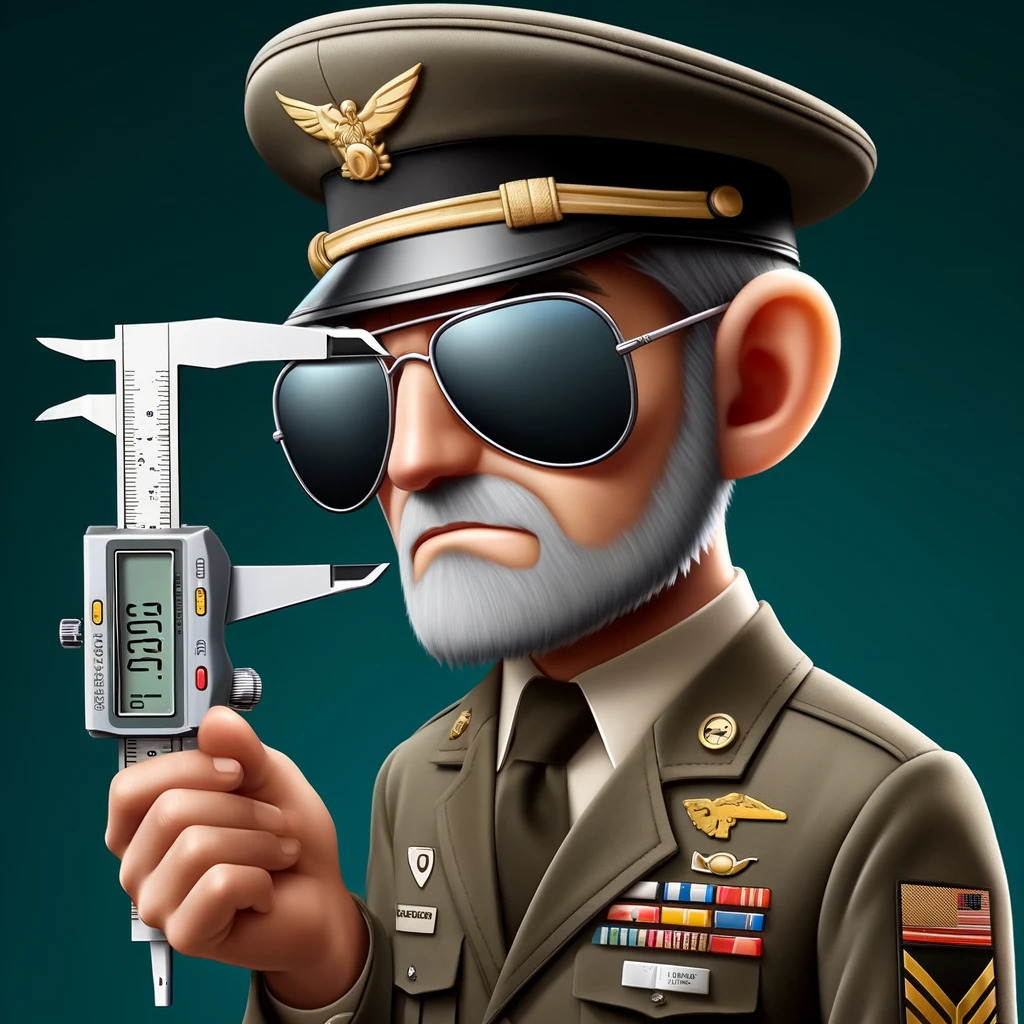Measuring the contour of an object can include capturing its shape, outline, or surface geometry. The method can vary in complexity based on the precision required, the shape of the object, and the tools available. Two of the most common ways of measuring contour are Optical Comparators and Contour Tracers. Each has advantages and disadvantages, depending on the application.
About Optical Comparators
An optical comparator, also known as a profile projector, is a device used in the manufacturing and engineering fields to inspect and measure the dimensions of small parts and components. The object is placed on the stage of a projector, and a magnified silhouette (shadow) is projected onto a screen using a light source, and a series of lenses. This shadow can be measured directly using the screen’s grid or digitally using software tools. The projected image can then be compared to known dimensions or geometries, often using overlays on the screen or by utilizing software that can directly measure the dimensions of the projected silhouette.
Components of an Optical Comparator:
- Light Source: Provides the illumination needed to project the silhouette of the object. The light source can be either transmitted light, which shines through transparent or semi-transparent objects, or reflected light, which illuminates opaque objects from above.
- Lenses: A series of optical lenses magnify the object’s shadow. The magnification level can be adjusted depending on the requirement, with common magnifications ranging from 5x to 100x.
- Stage: A platform where the object is placed for examination. The stage can usually be moved both horizontally and vertically, allowing for precise alignment and measurement of different parts of the object.
- Screen: A large display area where the magnified silhouette of the object is projected. The screen often has a grid or reticle overlaid on it to aid in measurement.
Optical comparators are used on a wide range of parts, where the shape of the key surface can be viewed in silhouette or as a “shadow”.
Optical comparators bridge the gap between simple measuring tools and more complex systems like coordinate measuring machines (CMMs) and contour tracers, offering a blend of precision, ease of use, and visual inspection capabilities.
About Contour Tracers
More complex shapes, parts with a tight tolerance, and those with features that cannot be shown by silhouette, are good candidates for a contour tracer. These machines measure the surface with a stylus and translate the measurement into part coordinates. They can be thought of as a 2D CMM in that the stylus usually measures in one plane, while traversing a second plane, perpendicular to the first. These coordinates can be shown on a computer monitor and compared to tolerances or a design drawing. Limiting the number of directions that the stylus can move in, enhances the accuracy of the measurement.
Components of a Contour Tracer
- Tracing element: An arm with a pointy contact point, often called a stylus or probe, which moves over the surface of the part recording data points that map out the surface geometry. The stylus movement is limited to short distances, to maintain accuracy.
- The column: A precision column allows the tracing element to move up and down relative to the part. This does not change the measurement range, but allows for the measurement of large and small parts.
- A computer and monitor: This processes the measured points and puts them in a coordinate system that can be understood by the machine operator. The computer can also plot the results on screen and compare the part tolerances with the measured data.
- Surface roughness options: A contour tracer can often be fit with a profilometer head, increasing its flexibility in measuring profile, as well as surface roughness.
In summary, contour tracer measuring machines are crucial in maintaining the high-quality standards of parts and products by providing precise measurements of their contours and surface geometries. Their use spans a wide range of industries, highlighting their importance in modern manufacturing and quality control processes.
Consult one of our measurement experts to find out if an optical comparator or contour tracer would be the right choice for your parts.
